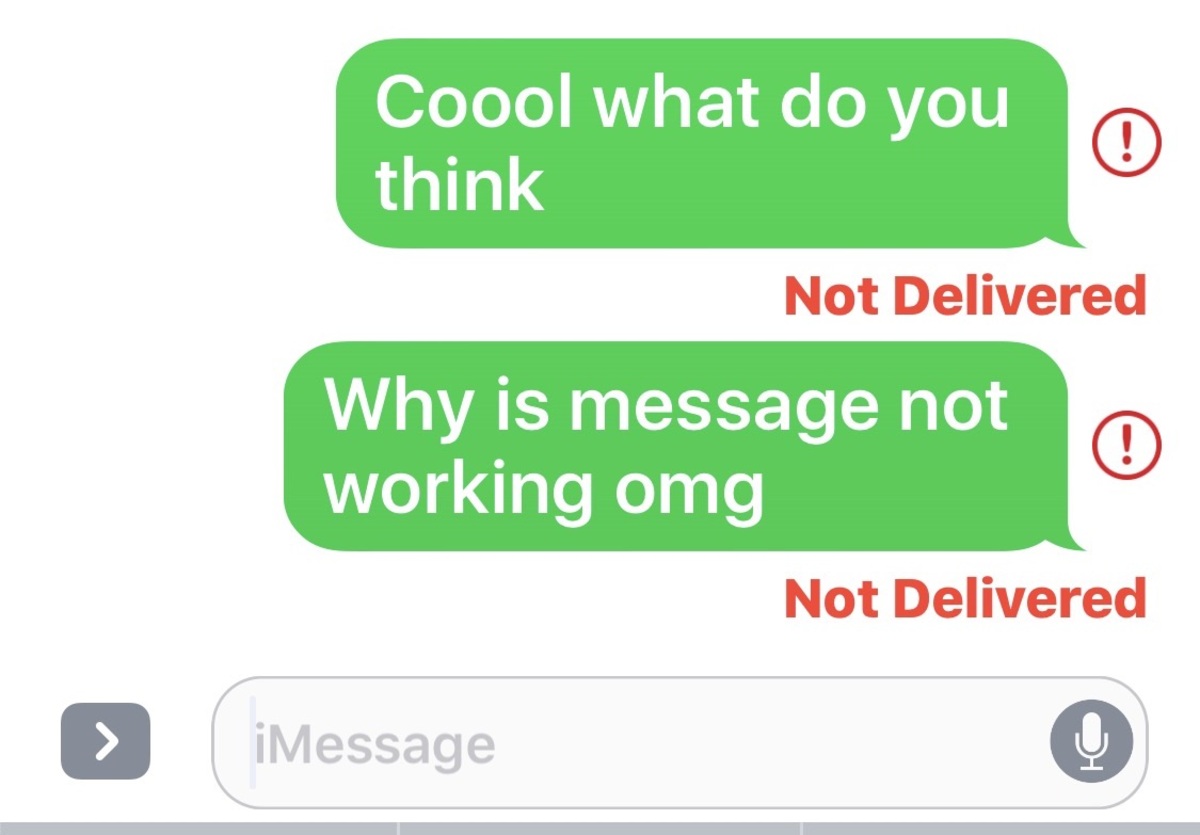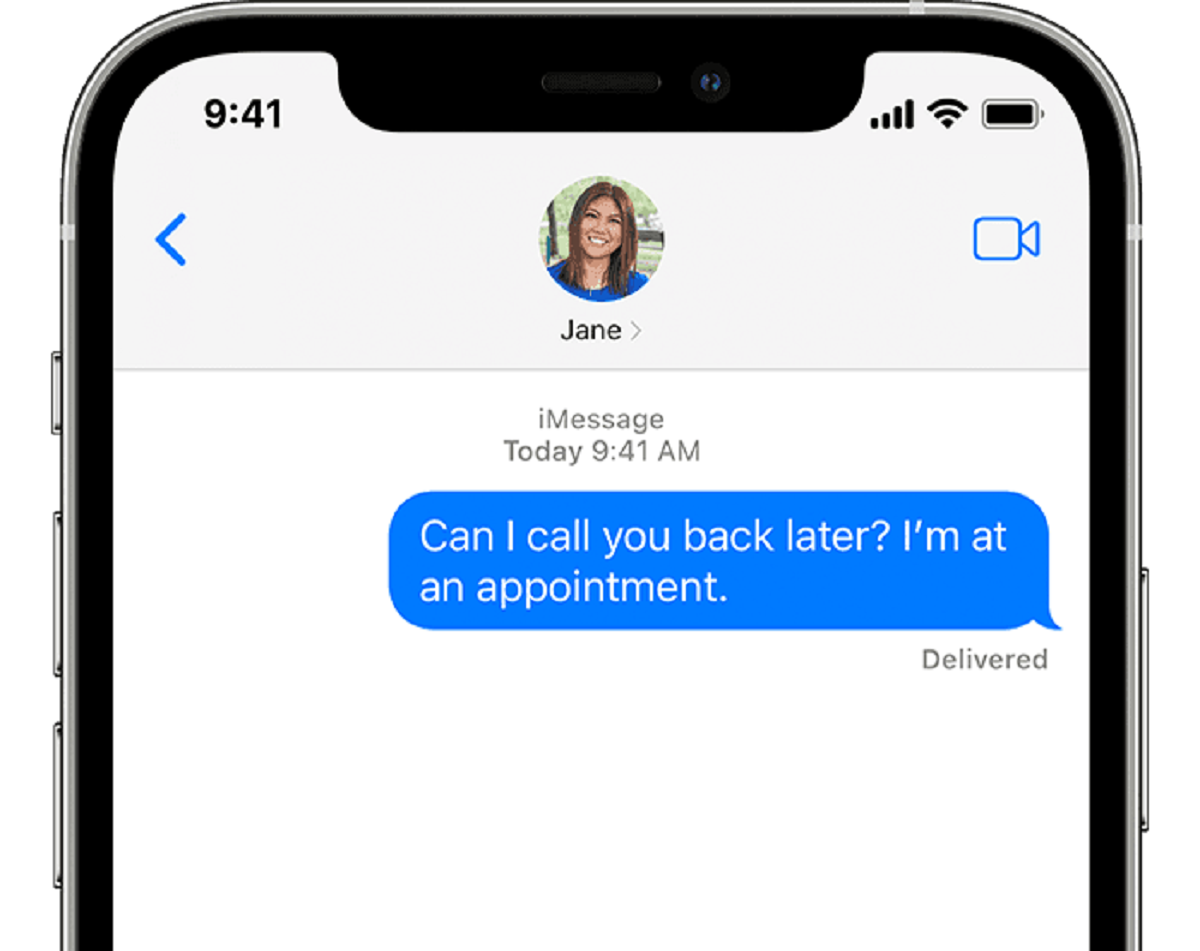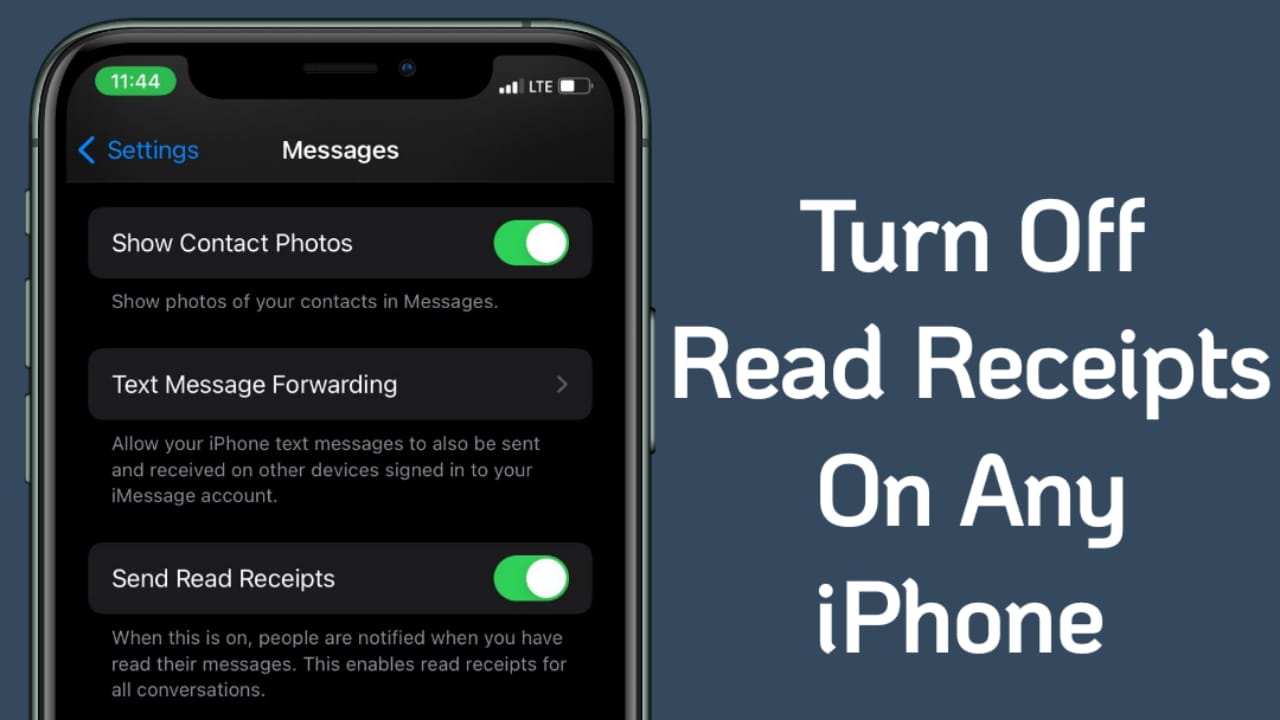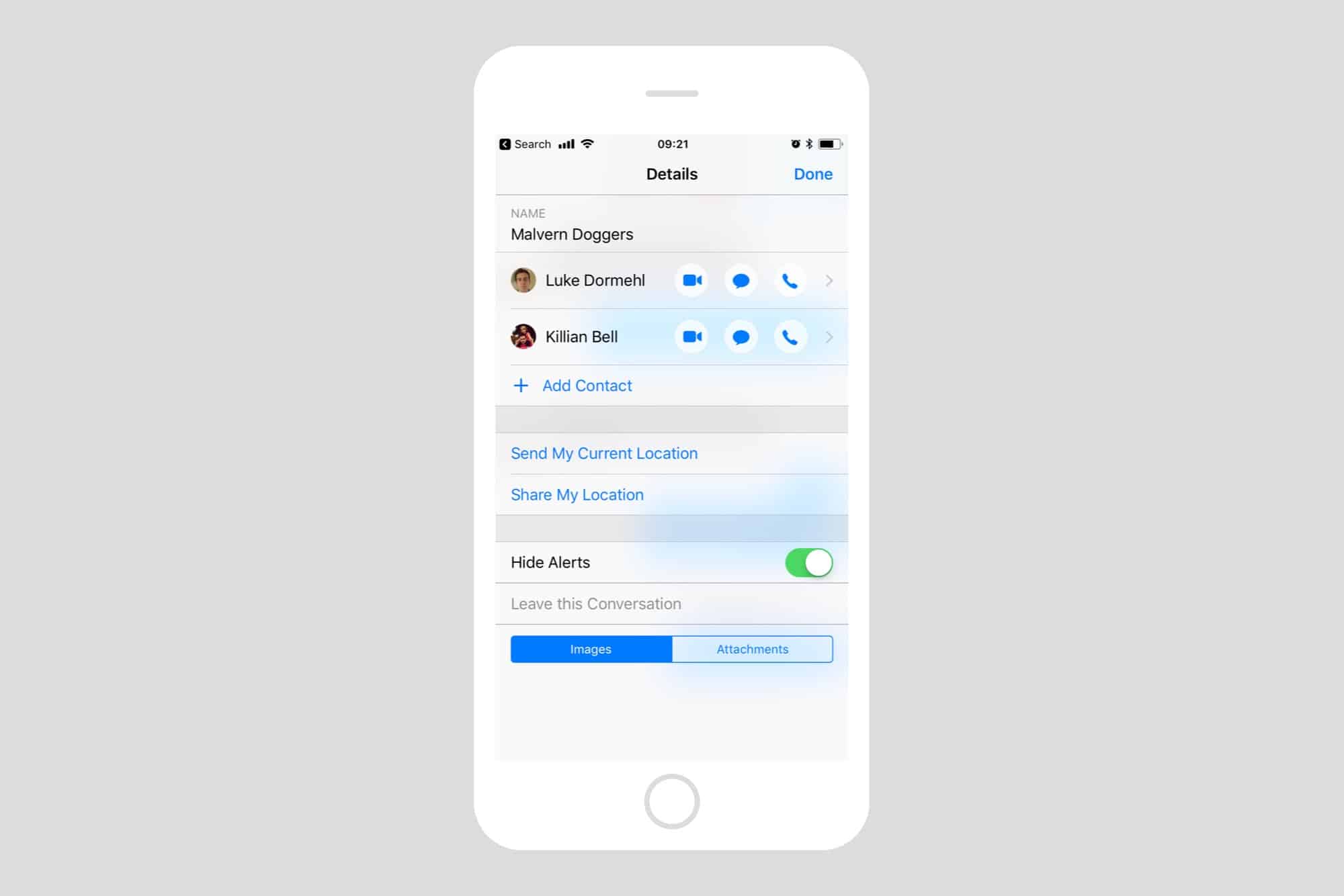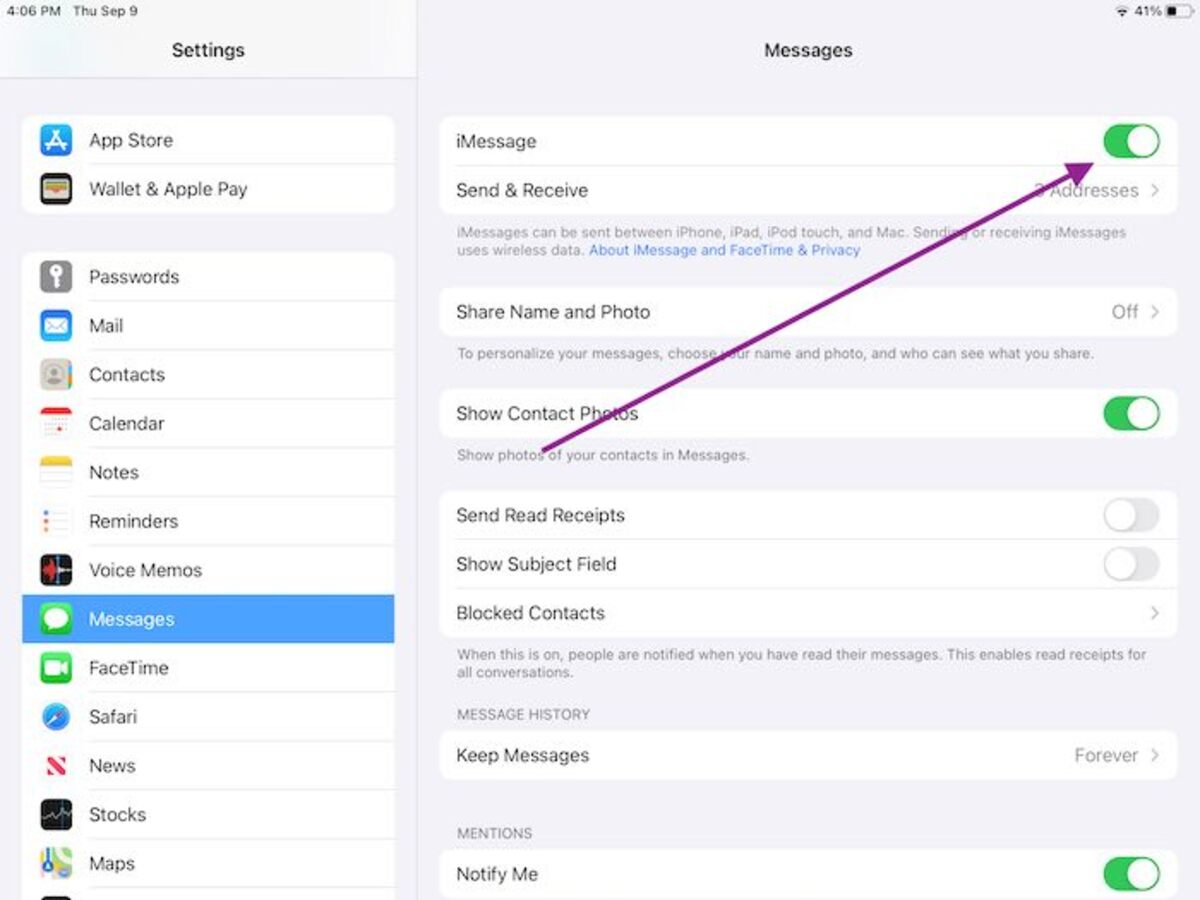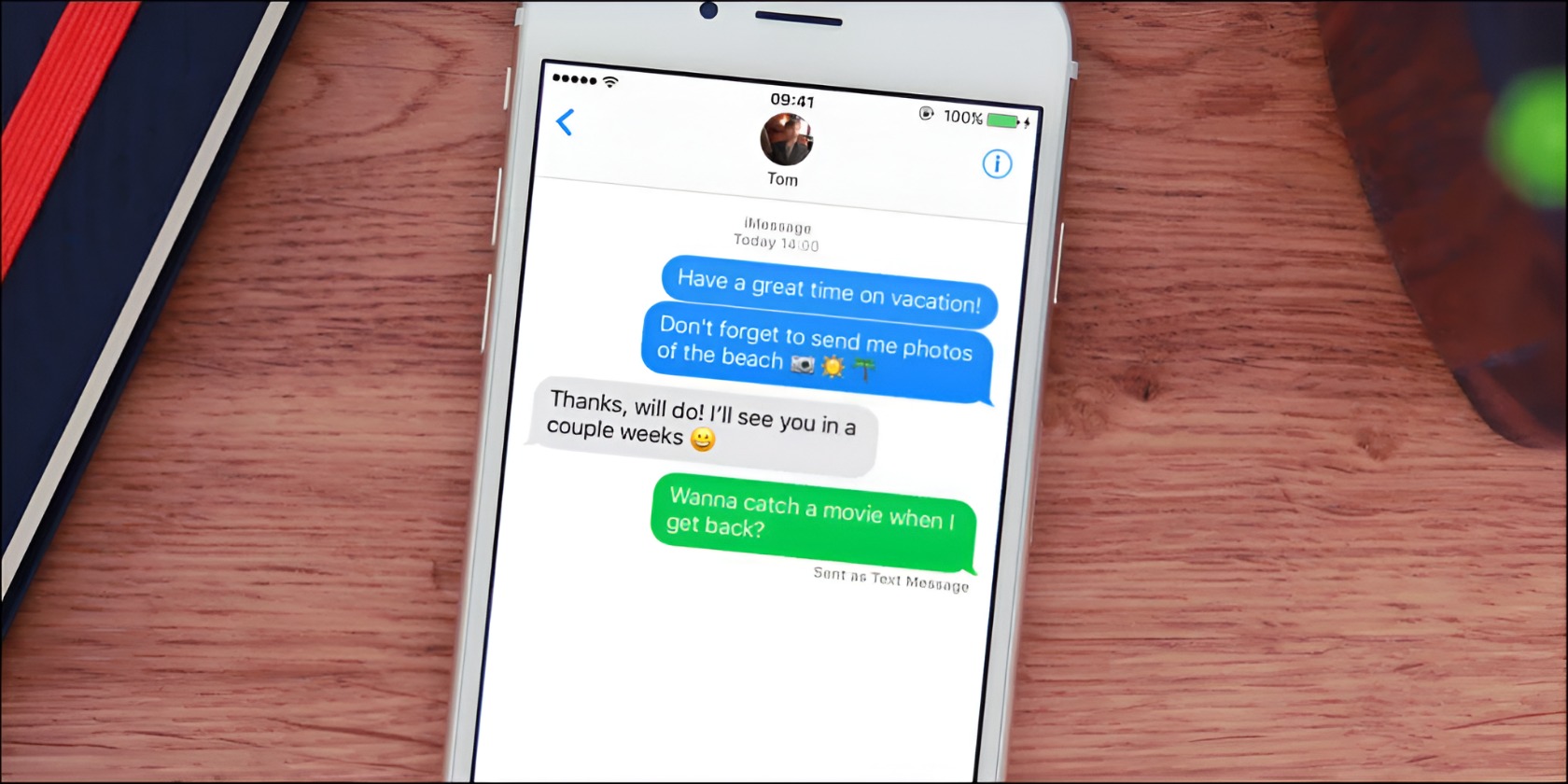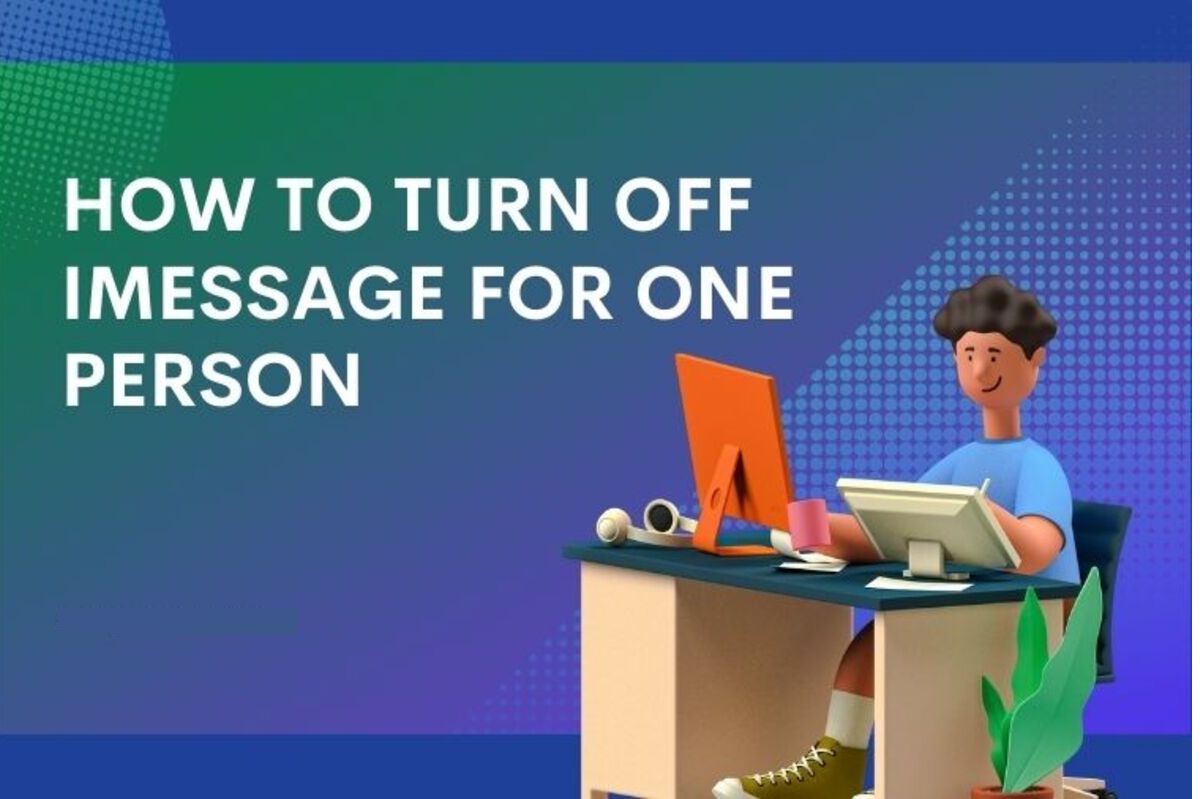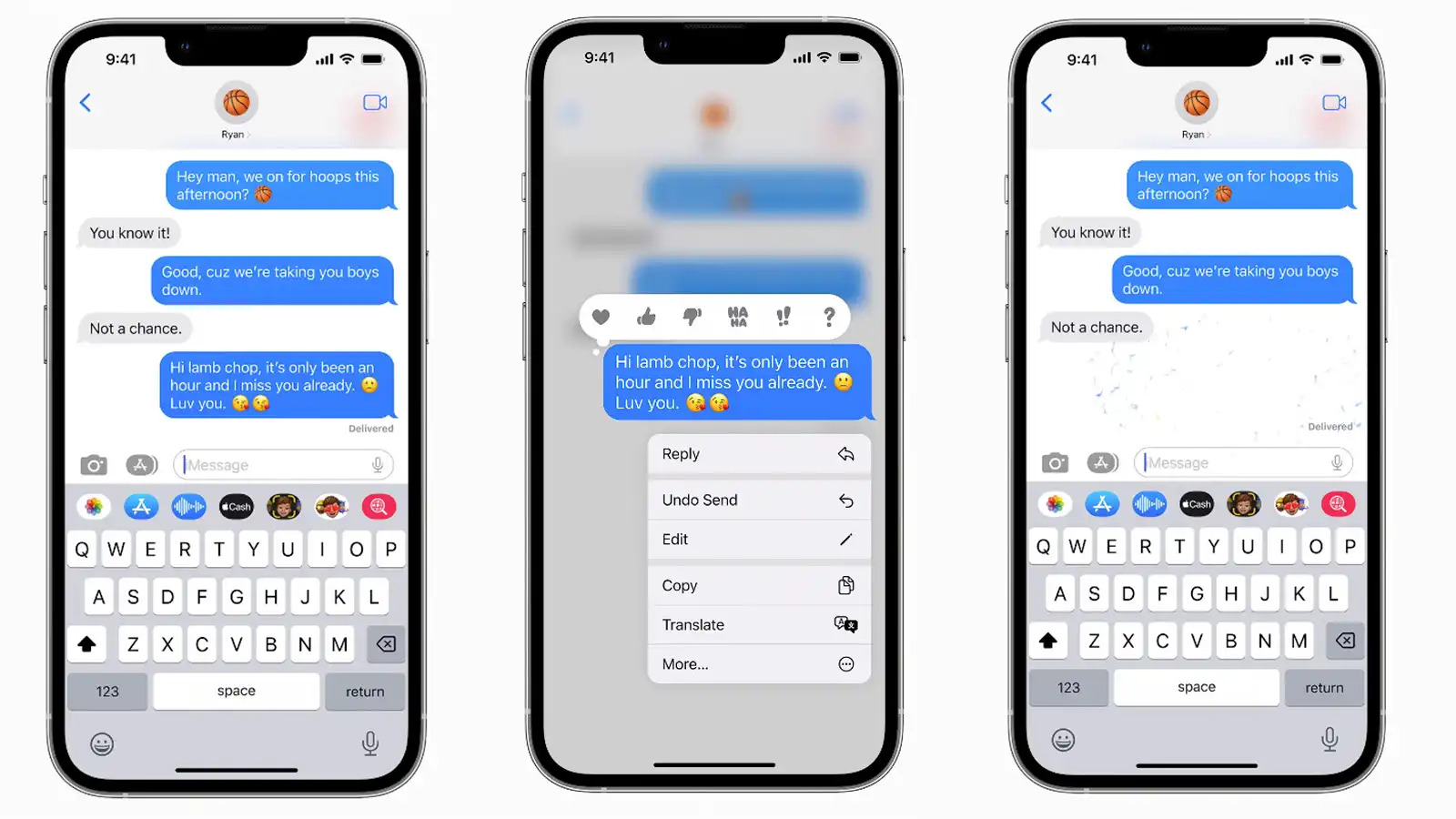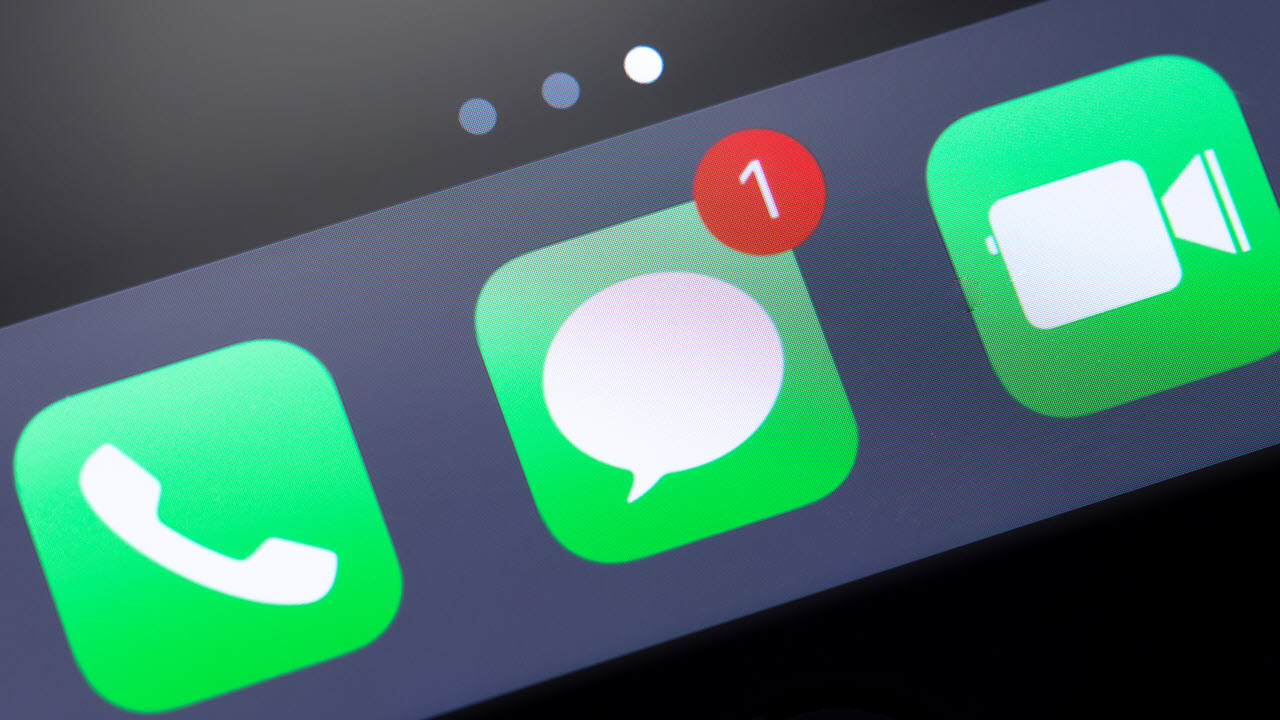Possible Reasons Why Your iMessage is Not Being Delivered
It can be frustrating when you send an iMessage to someone and it fails to deliver. There are several potential reasons why this may occur. Understanding these possible causes can help you troubleshoot and resolve the issue. Here are some of the most common reasons why your iMessage may not be delivered:
- Poor network connection: A weak or unstable internet connection can hinder the delivery of your iMessage. Verify that you have a stable Wi-Fi or cellular connection before sending your message.
- Outdated iOS or macOS versions: Running outdated software on your device can sometimes lead to communication issues. Ensure that your iOS or macOS is up to date with the latest updates and patches.
- App or software issues: Glitches or bugs in the iMessage app or the underlying operating system can cause message delivery problems. Restarting your device or reinstalling the iMessage app can often resolve these issues.
- Internet service provider problems: Your internet service provider may experience technical difficulties or service outages that can affect the delivery of iMessages. Contact your provider to confirm if there are any known issues.
- iMessage server downtime: Occasionally, the iMessage servers may undergo maintenance or experience temporary issues, resulting in message delivery delays. Give it some time and try sending your message again later.
- Disabled or blocked contact: If you have accidentally disabled or blocked the contact you are trying to message, your iMessage will not be delivered. Double-check your contact settings to ensure that the recipient is not blocked.
- Incorrect contact information: Make sure you have entered the correct email address or phone number of the recipient. Typos or misunderstandings can prevent your iMessage from reaching its intended recipient.
- Full message storage: If the recipient’s device has reached its storage limit for messages, new incoming iMessages may not be delivered. Advise the recipient to free up some storage space to resolve this issue.
- Unsent or failed message: Sometimes, due to environmental factors or technical glitches, a message may fail to send or get stuck in the sending process. Check your outbox and resend the message if necessary.
- Activation issues with iMessage: If you recently activated iMessage on a new device, it may take some time for the service to synchronize and start working correctly. Wait for a while and try sending your message again.
By understanding these potential causes, you can troubleshoot and address the issue preventing your iMessage from being delivered. Take the necessary steps to resolve the specific problem you are facing and enjoy the seamless communication experience that iMessage offers.
Poor Network Connection
A strong and stable network connection is crucial for the successful delivery of iMessages. If you are experiencing issues with your network connection, it can hinder the delivery of your messages. Here are some details on how a poor network connection can affect your iMessage delivery:
When you send an iMessage, it relies on your internet connection to transmit the message data to the recipient’s device. If your network connection is weak, it can lead to delays or failures in message delivery.
One common scenario is when you are connected to a Wi-Fi network with a weak signal. Your device may struggle to maintain a stable connection, resulting in intermittent or failed message delivery. Similarly, if you are in an area with poor cellular coverage, your iMessages may not be able to reach their intended recipients.
To ensure a stable network connection, try the following troubleshooting steps:
- Check your Wi-Fi or cellular signal strength: Make sure you have a strong signal by moving closer to your Wi-Fi router or switching to a different network.
- Restart your router and device: Sometimes, a simple restart can resolve connectivity issues. Turn off your router, wait for a few seconds, and then turn it back on. Similarly, restart your device to refresh the network settings.
- Toggle Airplane Mode: Activate and then deactivate Airplane Mode on your device to reset the network connections.
- Switch to a different network: If possible, connect to a different Wi-Fi network or switch to cellular data to see if the issue persists.
If you have tried these steps and are still experiencing a poor network connection, contact your internet service provider to determine if there are any known issues in your area. They may be able to provide additional guidance to improve your network connection.
Note: It’s worth mentioning that in some rare cases, even with a strong network connection, messages may still experience delays due to other factors such as congestion or server issues. If the problem persists, consider exploring other potential causes mentioned in the following sections.
Outdated iOS or macOS
Running outdated versions of the iOS or macOS operating systems on your devices can sometimes result in iMessage delivery issues. It is essential to keep your devices up to date with the latest software updates and patches to ensure optimal performance. Here are some details on how outdated iOS or macOS versions can affect iMessage delivery:
Apple regularly releases updates to address software bugs, security vulnerabilities, and improve overall performance. By not updating your iOS or macOS, you may encounter compatibility issues that hinder the proper functioning of iMessage.
Sometimes, Apple may make changes to the way iMessage communicates with servers or other devices. If you are running an older version of iOS or macOS, your iMessage may not be able to establish a successful connection with the recipient’s device, resulting in failed or delayed message delivery.
To address potential iMessage delivery issues related to outdated software, follow these steps:
- Check for software updates: On iOS, navigate to Settings > General > Software Update. On macOS, go to the Apple menu > System Preferences > Software Update. If an update is available, proceed with downloading and installing it.
- Enable automatic updates: To ensure that your device always stays up to date, consider enabling automatic software updates. This way, your device will automatically download and install the latest updates as they become available.
- Restart your device: After updating your iOS or macOS, restart your device to ensure that the changes take effect and any lingering issues are resolved.
Keeping your devices up to date not only helps address iMessage delivery problems but also ensures that you have access to the latest features and security enhancements provided by Apple.
Note: If you are unable to update your device due to compatibility reasons, consider reaching out to Apple support or visiting an authorized service center for assistance in resolving the iMessage delivery issue.
App or Software Issues
Glitches or bugs in the iMessage app or the underlying iOS or macOS can sometimes cause message delivery problems. These issues can range from minor software hiccups to more significant compatibility conflicts. Understanding how app or software issues can affect iMessage delivery can help you address and resolve the problem. Here are some details on app or software issues that may cause iMessage delivery failures:
iMessage relies on the proper functioning of the app and the underlying operating system to send and receive messages. If there are any software glitches or compatibility conflicts, it can disrupt the message transmission process.
Common symptoms of app or software issues include error messages when sending messages, messages getting stuck in the sending process, or delayed message delivery. These problems can be caused by a variety of factors, such as corrupted app data, conflicting app settings, or issues with the device’s operating system.
To troubleshoot and resolve app or software issues affecting iMessage, consider the following steps:
- Restart your device: Sometimes, a simple device restart can resolve temporary software glitches. Turn off your device, wait for a few seconds, and then power it back on.
- Update the iMessage app: Check if there are any available updates for the iMessage app in the App Store. Updating the app to the latest version can address known bugs or compatibility issues.
- Reset iMessage settings: On iOS, go to Settings > Messages > Send & Receive. Tap on your Apple ID and select “Sign Out,” then sign back in. On macOS, open the Messages app, go to Preferences > iMessage, and click on “Sign Out” and then sign back in. This can help reset any misconfigured settings that may be causing the issue.
- Reinstall the iMessage app: If the problem persists, consider uninstalling and reinstalling the iMessage app. This can help clear out any corrupted data or settings that might be causing the issue.
If the above steps do not resolve the problem, it is recommended to reach out to Apple support or visit an authorized service center for further assistance in diagnosing and resolving the app or software issues affecting iMessage.
Note: App or software issues can also be related to other third-party apps or services that interact with iMessage. If you recently installed any new apps or made changes to your device’s settings, consider reverting those changes or temporarily disabling the apps to see if they are causing the iMessage delivery problem.
Internet Service Provider Problems
While iMessage relies on a stable internet connection, there may be instances where the issue lies with your internet service provider (ISP). Problems with the ISP can disrupt the transmission of iMessages and may result in failed or delayed message delivery. Here are some details on how internet service provider problems can affect iMessage delivery:
Your internet service provider is responsible for providing you with a reliable and uninterrupted internet connection. However, there can be technical difficulties or service outages that affect the quality of your connection, consequently impacting iMessage delivery.
Network congestion, infrastructure issues, or maintenance operations by the ISP can prevent iMessages from being transmitted seamlessly. Additionally, if the ISP is experiencing widespread service disruptions, it can affect the connectivity of various online services, including iMessage.
To determine if the problem is related to your internet service provider, consider the following steps:
- Check for widespread outages: Visit the ISP’s website or social media accounts to see if they have posted any information about service disruptions or planned maintenance in your area.
- Contact your internet service provider: Reach out to your ISP’s customer support to inquire about any known issues. They can provide specific details regarding the status of your connection and assist in troubleshooting the problem.
- Troubleshoot your router: Restarting your router can sometimes resolve minor connectivity issues. Turn off the router, wait for a few seconds, and then turn it back on. If the issue persists, contact your ISP for further assistance.
- Consider alternate connections: If possible, try switching to a different internet connection, such as using mobile data or connecting to a different Wi-Fi network. This can help verify if the problem is specific to your ISP.
If the problem is determined to be with your internet service provider, you will need to rely on their support to resolve the issue. It is recommended to stay in touch with them for updates on the status of the problem and follow their instructions for troubleshooting or resolution.
Note: It’s worth mentioning that internet service provider problems are temporary and can often be resolved relatively quickly. Once the issue is resolved, your iMessage delivery should return to normal.
iMessage Server Downtime
Occasionally, the iMessage servers may experience downtime due to maintenance or technical issues. When the iMessage servers are offline or experiencing disruptions, it can result in message delivery delays or failures. Here are some details on how iMessage server downtime can affect message delivery:
The iMessage service relies on a network of servers maintained by Apple to transmit messages between devices. These servers need regular maintenance or occasional troubleshooting, which can cause temporary downtime.
During server downtime, the communication between your device and the recipient’s device may be interrupted. This can lead to iMessages not being delivered promptly or at all. While server downtime is typically resolved quickly, it can still cause inconvenience when sending time-sensitive messages.
To determine if iMessage server downtime is causing your message delivery issues, consider the following steps:
- Check Apple’s System Status page: Visit the Apple System Status page (https://www.apple.com/support/systemstatus/) to see if iMessage is experiencing any reported issues. If there is an ongoing service disruption, Apple will provide updates on the status and expected resolution time.
- Check other devices or contacts: Test sending iMessages to different contacts or using other devices connected to the same iMessage account. If the issue persists across multiple devices and contacts, it is more likely to be related to server downtime.
- Wait and try again later: If server downtime is causing the message delivery problem, there is little you can do except wait for the issue to be resolved. Often, the servers are back online within a short period, and your message delivery will resume as normal.
It’s important to note that server downtime is typically temporary and beyond the control of individual users. Apple works diligently to minimize downtime and restore services as quickly as possible. During such events, it is recommended to be patient and wait for the servers to be back online.
Note: If you continue to experience message delivery issues even after the reported downtime has been resolved, consider exploring other potential causes mentioned in earlier sections or contact Apple support for further assistance.
Disabled or Blocked Contact
If you are unable to send iMessages to a specific contact, it is possible that the contact has been disabled or blocked. When you disable or block a contact, it prevents them from receiving any iMessages from you. Here are some details on how a disabled or blocked contact can affect iMessage delivery:
Disabling or blocking a contact can be intentional or accidental. If you have disabled or blocked a contact, your iMessages will not reach them, and you may receive no indication that your message was not delivered.
It’s important to verify if the contact you are trying to message is disabled or blocked. Sometimes, this can happen unknowingly, especially if you have made changes to your device’s settings or contact preferences.
To check if a contact is disabled or blocked, follow these steps:
- On iOS: Go to the Contacts app, find the contact in question, and ensure that there are no restrictions or blocks set for that contact.
- On macOS: Open the Contacts app, select the contact, and check the contact’s information for any blocking or limitations.
- On iPhone or iPad: Go to Settings > Messages > Blocked, and confirm that the contact is not on the blocked list.
If you find that the contact is blocked or disabled, unblock or enable the contact to allow iMessages to be delivered successfully. Once the contact is unblocked, you can send iMessages to them without any issues.
Note: If the contact intentionally disabled or blocked you, there may be other communication issues that need to be addressed separately. It is best to have a direct conversation with the contact to resolve any conflicts or misunderstandings.
Incorrect Contact Information
One possible reason why your iMessage is not being delivered is due to incorrect contact information. It is crucial to ensure that you have entered the accurate email address or phone number of the recipient. Here are some details on how incorrect contact information can affect iMessage delivery:
When you send an iMessage, it relies on the recipient’s correct contact information to route the message to the intended device. If you have entered the wrong email address or phone number for the recipient, the iMessage will not be delivered.
Make sure to double-check the contact details before sending an iMessage. Typos, missing digits, or incorrect domain names can prevent your message from reaching the intended recipient.
If you are unsure about the correct contact information, reach out to the recipient through another communication channel to confirm their email address or phone number. It is better to verify and update the contact details than to continue attempting to send iMessages to the wrong information.
Here are some steps you can take to ensure the accuracy of the contact information:
- Manually enter contact information: Avoid relying solely on auto-complete or auto-fill features when adding a contact. Instead, manually enter the email address or phone number to minimize the chances of errors.
- Copy and paste contact details: If you have the contact information in a separate document or message, copy it and paste it into the appropriate field to avoid any manual typing errors.
- Verify the contact’s preferred communication method: Some individuals may have multiple contact options, such as both an email address and a phone number. Make sure you are using the correct contact method based on the recipient’s preferences.
- Reconfirm the contact information: If you suspect that the contact information may have changed, reach out to the recipient directly to ensure you have the most up-to-date details.
By verifying and updating the contact information, you can help ensure that your iMessage is delivered to the correct recipient without any issues.
Note: It’s important to respect privacy and only contact individuals with whom you have consent to communicate. Sending unsolicited messages or contacting individuals without their permission is considered inappropriate and may result in negative consequences.
Full Message Storage
If your iMessage is not being delivered, it could be due to a full message storage on the recipient’s device. When the message storage reaches its maximum capacity, new incoming iMessages may not be received. Here are some details on how a full message storage can affect iMessage delivery:
iMessages are stored locally on the recipient’s device. If the device’s message storage is full, there may not be enough space to store new messages, resulting in delivery issues.
Full message storage can occur when the recipient has a large number of conversations or when media files (such as photos and videos) take up a significant amount of storage space.
To address iMessage delivery problems caused by full message storage, consider the following steps:
- Advise the recipient to free up storage space: Ask the recipient to delete unnecessary messages, especially those with large attachments or media files. Clearing out old conversations or media can create more storage space for new incoming iMessages.
- Recommend enabling the ‘Auto Delete’ feature: On iOS, the recipient can choose to automatically delete messages after a certain period. This can help manage the message storage and prevent it from reaching full capacity.
- Suggest disabling media auto-download: By turning off the automatic downloading of media files in iMessage settings, the recipient can prevent the storage from being filled with large attachments.
- Encourage the recipient to back up messages: If the recipient wishes to keep important messages but needs to free up storage space, they can back up their messages to iCloud or another cloud storage service before deleting them.
If the recipient has addressed their full message storage issue, subsequent iMessages should be delivered successfully.
Note: It’s important to remember that the full message storage issue is specific to the recipient’s device and storage capacity. Double-checking the recipient’s storage situation can help determine if this is the cause of the iMessage delivery problem.
Unsent or Failed Message
If your iMessage is not being delivered, it is possible that the message itself has encountered an issue and remains unsent or has failed to be delivered. Here are some details on how an unsent or failed message can affect iMessage delivery:
iMessages can sometimes fail to send or get stuck in the sending process for various reasons. This can result in the message not being delivered to the recipient.
Common factors that can contribute to unsent or failed messages include network interruptions, system glitches, or conflicts with other apps or services running on your device. It is normal for individual messages to encounter occasional issues, especially in dynamic network environments.
To address unsent or failed messages, consider the following steps:
- Check the message status: On iOS, the message bubble may display a red exclamation mark indicating that the message failed to send. On macOS, a similar notification may appear. Tap on these indicators to view more details about the failed message and any suggested next steps.
- Resend the message: Depending on the app or platform you are using, you may have the option to resend the unsent message directly from the message details screen. Try resending the message to see if it goes through successfully.
- Restart your device: A simple device restart can help refresh the network connections and resolve temporary glitches that may have prevented the message from being sent. After restarting, check if the issue persists and resend the message if needed.
- Ensure a stable internet connection: Verify that you have a strong and stable internet connection before attempting to resend the message. Connect to a reliable Wi-Fi network or ensure that your cellular data has a sufficient signal strength.
- Contact support if the issue persists: If you continue to experience problems with unsent or failed messages, consider reaching out to the app or device support team. They can provide further assistance in troubleshooting the specific issue you are facing.
By following these steps, you can improve the chances of your iMessage being successfully sent and delivered to the intended recipient.
Note: It’s important to remember that occasional unsent or failed messages are common and often due to temporary issues. If the problem persists across multiple messages or contacts, further investigation may be necessary.
Activation Issues with iMessage
If you are experiencing problems with iMessage not being delivered, it is possible that you are encountering activation issues with iMessage itself. Activation issues can prevent iMessage from functioning correctly, affecting message delivery. Here are some details on how activation issues can affect iMessage delivery:
iMessage requires activation to establish a secure connection between your device and Apple’s servers. If there are any issues with the activation process, it can result in iMessage not being able to send or receive messages.
Activation issues can occur for various reasons, such as network interruptions, incorrect Apple ID login credentials, or issues with Apple’s servers. It is particularly common when setting up iMessage on a new device or after restoring a device from a backup.
To address activation issues with iMessage, consider the following steps:
- Check your network connection: Verify that you have a stable internet connection before attempting to activate iMessage. A weak or unstable network connection can interfere with the activation process.
- Ensure correct Apple ID credentials: Double-check that you are using the correct Apple ID and password to sign in to iMessage. If you are not sure, you can sign out of your Apple ID in the iMessage settings and then sign back in.
- Restart your device: Restarting your device can help reset various system processes and potentially resolve activation issues. After restarting, attempt to activate iMessage again.
- Update iOS or macOS: Make sure your device’s operating system is up to date with the latest version. Apple often releases updates that address known issues and improve compatibility, which can help resolve activation problems.
- Disable and enable iMessage: In the iMessage settings, try disabling iMessage and then re-enabling it. This can sometimes trigger a fresh activation attempt and solve activation-related issues.
- Contact Apple support: If none of the previous steps work, it is recommended to reach out to Apple support for further assistance. They can provide specific guidance tailored to your situation and help resolve the activation issue.
Addressing activation issues with iMessage is crucial for ensuring successful message delivery. By following the steps above, you can potentially resolve any activation issues and restore full functionality to iMessage.
Note: Activation issues are typically specific to individual devices and can be resolved with the appropriate troubleshooting steps. It is not uncommon for such issues to arise during the initial setup or after major software updates.







